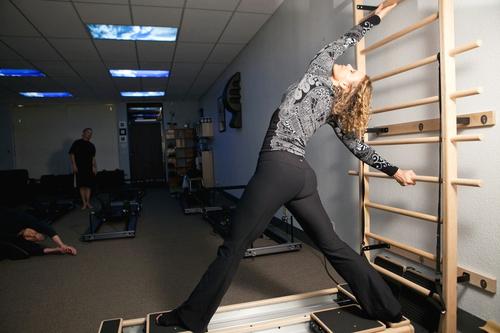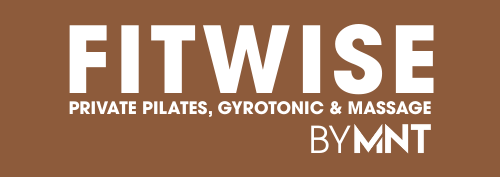 Good posture can help us to attain (and retain as we age) maximum flexibility, strength, resiliency, and mobility of the spine. This is a goal well worth aiming for, and regular Pilates workouts can help you achieve it — because postural awareness is built right in to every exercise.
Good posture can help us to attain (and retain as we age) maximum flexibility, strength, resiliency, and mobility of the spine. This is a goal well worth aiming for, and regular Pilates workouts can help you achieve it — because postural awareness is built right in to every exercise.
A person who moves well in his or her body projects a sense of power, grace, self-confidence, and personal style. If your posture is equivalent to a lazy slump, you CAN end up with a thick waist, narrow chest, and rounded shoulders that take a good 2 inches off your natural height — definitely not the picture of grace and style! Good posture is about more than just looking good, though; it’s essential to a healthy, well-functioning body.
Poor posture is an energy sapper. If your spine is incorrectly balanced, your muscles need to work harder to keep your body upright all day long. Lazy posture also causes your upright structure to collapse in places, like a poorly constructed building. In turn, this can compound many physical ailments, such as digestive problems, poor circulation, chronic low energy, lower back pain, headaches, and shortness of breath.
The Pilates Methodology is based on sound scientific principles that squarely address the structural realities of the human body. Among its many benefits, it seeks to promote good posture by balancing the body and distributing the normal physical stresses of standing and moving among the appropriate bone and muscle groups.
The human spine is made up of 32 to 34 bones called vertebrae, and it is designed to provide a maximum range of motion and support for the body with a minimum of wear and tear on the spine’s joints, or intervertebral discs. In addition, the spine has four natural curves:
IDEAL POSTURE
- a flexible forward (or anterior) curve in the 7 cervical vertebrae that form the neck
- a flexible backward (or posterior) curve in the 12 thoracic vertebrae, where the ribs attach to form your torso
- another flexible anterior curve in the 5 lumbar vertebrae that form the lower back
- a final, fixed posterior curve in the 5 fused bones of the sacrum, where the spine attaches to the pelvis
If your posture is good, as illustrated here, these spinal curves lend shock absorption, extra flexibility, and range of motion to your movement. Having evenly developed back muscles and strong abs helps support the spine. But if there is too much or too little curve in your spine, or if the curves do not balance properly with one another, your posture is poor, which can lead to structural problems and back pain.
Poorly aligned postures cause asymmetrical muscle development, meaning certain muscle groups are constantly overworking to hold the body upright, while others become significantly weakened. Even our favorite sports, such as golf, tennis, and running, encourage lopsided and uneven muscle development — as does carrying a briefcase or handbag on one side of your body, or balancing an infant on the same hip for hours on end.
Pilates can be a wonderful solution to all these poor postural habits because the exercises encourage bilateral, even muscle development and flexibility at the same time. A good Pilates workout doesn’t have to be long or exhausting — but it can and will rebalance your body over time.
by Jillian Hessel
